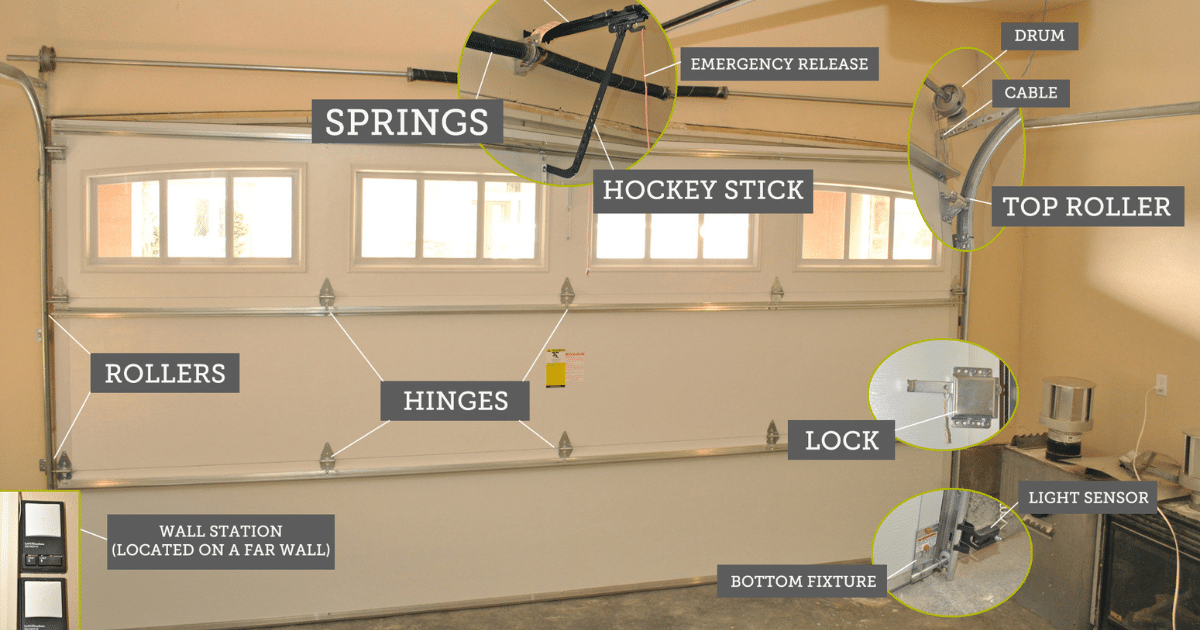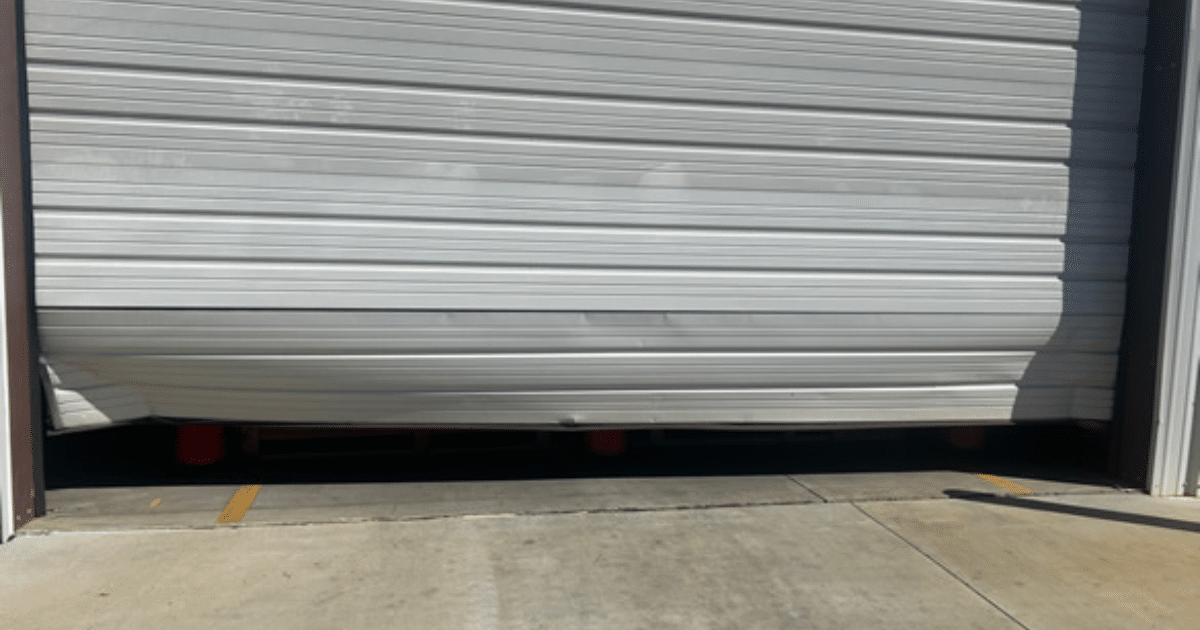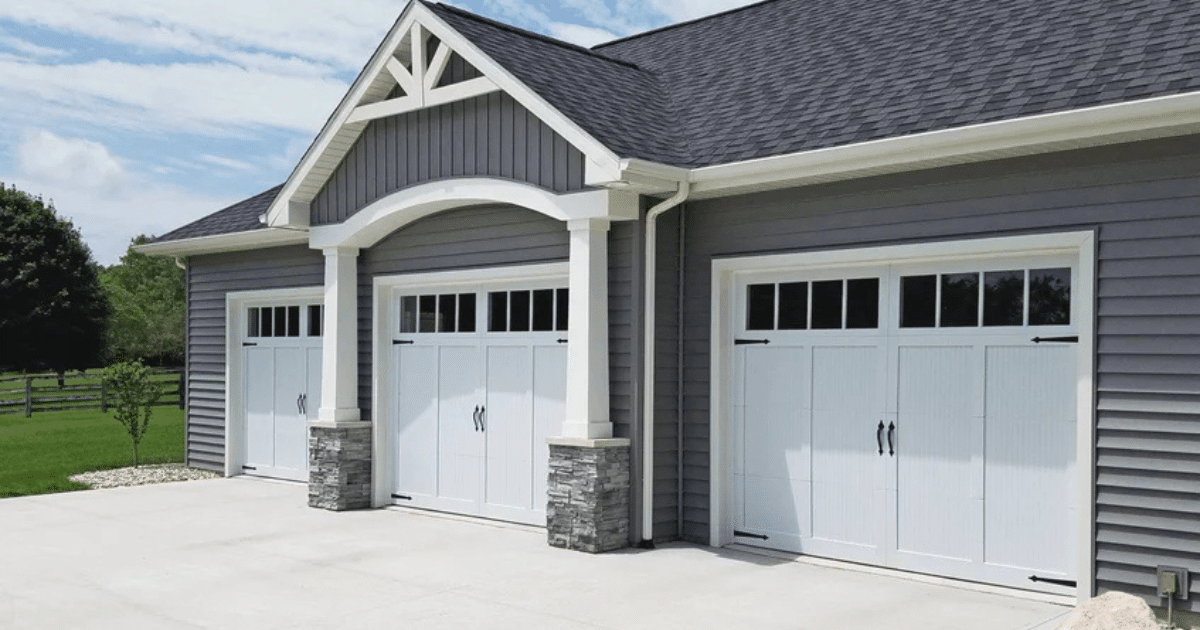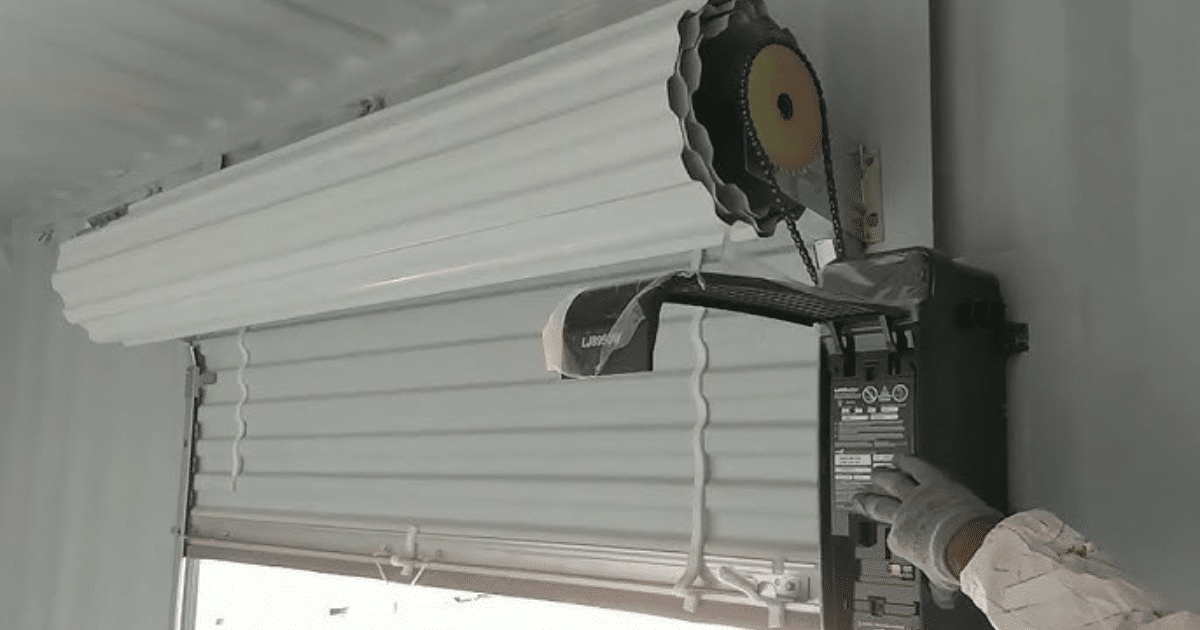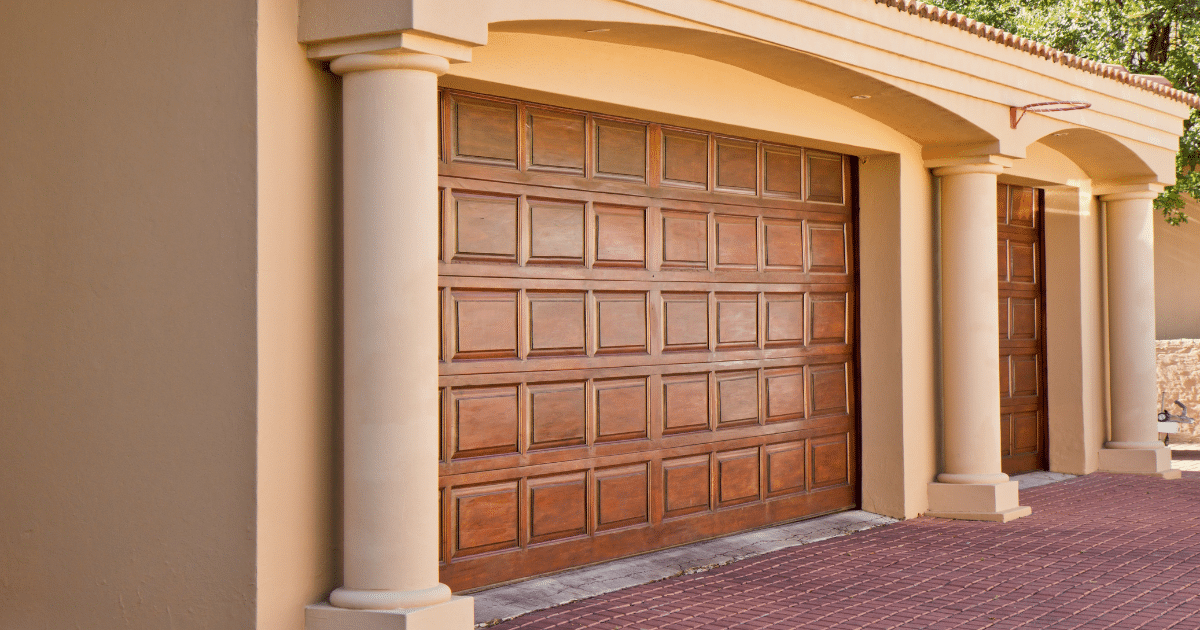Explore our homeowner-focused garage door anatomy guide. Discover how each part works, the signs of wear, and what to do when things go wrong!
Understanding how your garage door works is key for safety, maintenance, and upgrades. The anatomy of garage door systems includes panels, springs, tracks, rollers, cables, and openers. These parts work together to move the door smoothly and keep your home safe, secure, and running properly daily.
Each part has a purpose. Panels form the door, hinges let them bend, and rollers move along the tracks. Springs lift the weight, and the opener powers the motion. Sensors keep the door from closing if something is blocking it. This guide explains it all clearly to help you understand the complete anatomy of garage door systems.
What Is the Anatomy of a Garage Door
The anatomy of a garage door includes all the parts that help it open and close. These include springs, tracks, rollers, and more. Each part has a job, and they all work together to make the door move safely and smoothly.
A garage door may look simple, but it has many working parts. Knowing how each one works helps you spot problems early. If anything goes wrong, a garage door repair service can help fix issues with panels, openers, or cables before they worsen.
Garage Door Panels and Materials
Garage door panels shape the door and impact style, strength, and insulation. Material choice affects durability, cost, and maintenance.
- Steel: Strong, low-maintenance, often insulated.
- Aluminum: Light, rust-free, dents easily.
- Wood: Classic look, high upkeep.
- Fiberglass: Resists salt, may crack in cold.
- Composite: Wood-like, durable, well-insulated.
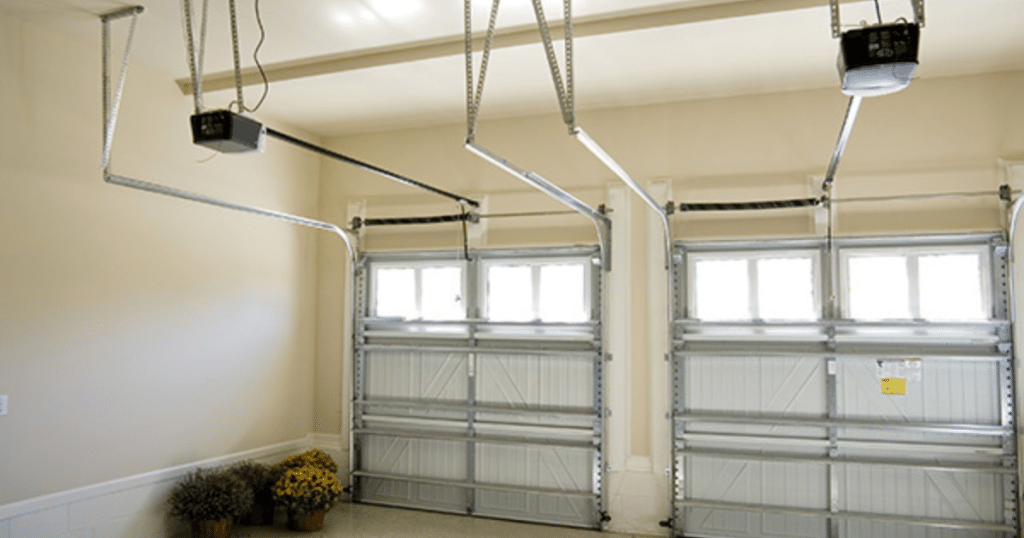
Garage Door Torsion and Extension Springs
Springs are vital for counterbalancing the door’s weight, making it easier to lift by hand or with an opener. This section explains the two types and how they work.
- Torsion springs: Sit above the door and twist to hold energy. They offer smoother motion and longer life.
- Extension Springs: Located on the sides, they stretch and contract. While cheaper, they require safety cables to avoid snapping hazards.
Garage Door Tracks and Rollers
Tracks and rollers help the door move smoothly up and down. Proper alignment and maintenance of these components are key to safe and quiet door movement.
- Vertical Tracks: Mounted on each side of the opening.
- Horizontal Tracks: Extend from the top, guiding the door as it opens overhead.
- Rollers: Attached to each panel, they move within the tracks.
Garage Door Hinges and Brackets
These small parts do a big job. Hinges connect the panels, while brackets hold various parts in place. Both must be secure for your door to function.
- Center Hinges: Allow the panels to bend as the door rolls up.
- End Hinges: Support the rollers.
- Bottom Brackets: Hold the cables under high tension, so handle cautiously.
The Garage Door Opener System
The opener powers and manages your garage door with its motor, drive system, and controls.
Motor Types:
- AC Motors: Long-lasting, usually louder.
- DC Motors: Quieter, often come with soft start/stop features.
Drive Systems:
- Chain-Drive: Strong and budget-friendly.
- Belt-Drive: Smooth and quiet.
- Screw-Drive: Fewer moving parts.
Garage Door Sensors and Safety Features
Modern garage doors have essential safety features that prevent injury and protect belongings. Understanding these is key to their safe operation.
- Photo-Eye Sensors: Mounted near the ground on both sides, these send a beam that stops the door if broken.
- Auto-Reverse: If the door hits something, it lifts back up.
- Manual Release Cord: Lets you open the door manually during power outages.
Garage Door Cables and Drums
The cables and drums help move the door up and down without trouble. They work alongside the springs to balance weight.
- Lift Cables: Connect the bottom brackets to the drums.
- Drums: They wind and unwind the cables at each end of the torsion bar.
Garage Door Weather Seals and Insulation
Weather seals and insulation protect your garage door against wind, water, pests, and heat loss.
- Bottom Seal: Keeps drafts and water out.
- Side & Top Seals: Fill in the gaps around the door.
- Insulation Panels: Improve energy efficiency and noise control.
Garage Door Hardware and Accessories
The little parts that hold everything together play a big role in smooth operation. These include nuts, bolts, fasteners, and supports.
- Fasteners: Keep parts like hinges and brackets firmly attached.
- Struts: Reinforce large doors to prevent sagging.
- Locks: Provide added security for manual doors.
Garage Door Wall Controls and Remotes
Thanks to remotes, keypads, and wall-mounted controls, opening your garage door is easy. These offer convenient access and are easy to maintain.
- Wall Button: Standard button inside the garage to open/close the door.
- Keypad: Lets you enter a code to open the door from outside.
- Remotes: Handheld devices that signal the opener from your vehicle.
Smart Garage Door Technology
Many homeowners are upgrading to smart garage door openers that connect to phones or home assistants. These new tools offer control, alerts, and automation.
- Wi-Fi Enabled Openers: Control your door from an app.
- Motion Detection: Lights turn on when movement is detected.
- Scheduled Access: Allow delivery people or guests during certain hours.
Maintenance Tips for Garage Door Parts
Knowing the parts isn’t enough, and regular upkeep keeps everything working. Here’s how to maintain each major section.
1. Lubricate Parts
To keep your garage door running smoothly, apply lubricant to the hinges, springs, and rollers every six months. This helps prevent noise, wear, and rust while keeping all parts working properly.
2. Clean Tracks
Wipe the garage door tracks with a clean cloth to remove dirt and debris. Avoid grease or oil on the tracks, as it can attract more dirt and cause the door to stick or jam.
3. Test Sensors
Check the garage door sensors monthly by waving a solid object in front of the beam while closing. If the door doesn’t stop or reverse, clean the lenses and adjust the sensor position right away.
4. Tighten Hardware
Over time, garage door bolts and screws can come loose from daily use. Go over each one with a wrench or screwdriver to tighten them. This keeps your door stable and prevents shaking or other issues.
5. Replace Seals
Look at the bottom and sides of your garage door for worn or cracked weather seals. If they’re damaged, replace them to keep out water, dust, and bugs while improving energy savings and comfort inside.
How to Spot Common Garage Door Problems Early
Learning the signs of trouble helps you prevent severe damage. Here are the most common issues:
1. Door Sticks or Jerks
If your garage door moves roughly or gets stuck, the track might be bent or the rollers may be old. Cleaning the track or replacing bad rollers helps the door move better and more safely.
2. Loud Door Sounds
If your new garage door makes loud noises, the springs might be worn, or the motor is working too hard. These parts need care. Fixing or replacing them can make the door quieter and last longer.
3. Remote Doesn’t Work
If the garage door remote won’t work, change the battery first. It could also be a signal problem. If that doesn’t help, try reprogramming the remote or check for anything blocking the signal.
4. The Door Looks Uneven
A cable or spring might be off if one side of your garage door is higher than the other. A door that’s not level can stop working properly and should be fixed to avoid damage.
5. Door Won’t Shut
If your garage door won’t close, check the safety sensors near the floor. They may be dirty, blocked, or not lined up. Clean and adjust them to get the door working again.
When to Call a Garage Door Professional
Some parts of the garage door system can be dangerous to work on, especially springs and cables under tension. Know when to DIY and when to get help. Call a pro if:
1. A Spring Break
When a garage door spring breaks, the door gets very heavy and hard to lift. This is a common issue in older doors. All About Doors can replace the broken spring quickly to prevent more damage and keep your door safe.
2. The Cable Snaps or Frays
Garage door cables lift the door evenly. If a cable snaps or frays, the door may tilt, jam, or fall. Stop using the door and get it fixed right away to prevent more trouble or injury.
3. The Door Comes Off the Track
If the garage door jumps off its track, it might get stuck or hang unevenly. This can happen if the rollers are worn or something hits the door. Putting it back on track keeps the system safe and smooth.
4. The Opener Stops Working with No Power Issue
If your garage door opener won’t work and there’s no power problem, it might be the remote, sensors, or control board. Try resetting it or checking the parts before calling for help with garage door opener repair.
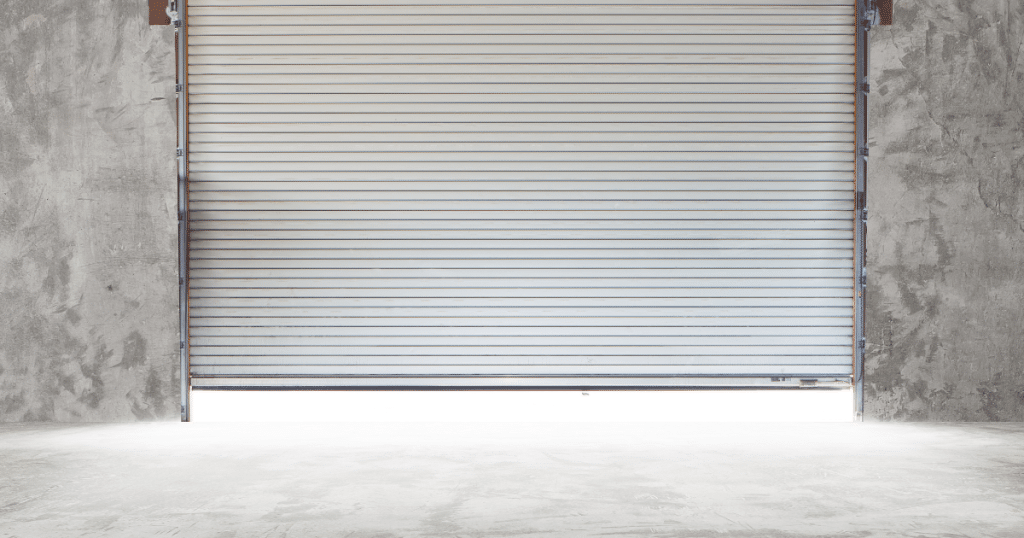
Frequently Asked Questions
What are the parts of a garage door?
A garage door has several parts, including panels, rollers, hinges, tracks, springs, cables, and weather seals. If it’s automatic, it also includes a garage door opener. All these parts work together to help the garage door open and close safely and smoothly.
What are the most common garage door repairs?
Common garage door repairs include fixing broken springs, loose cables, old rollers, bent tracks, and opener problems. You might also need to fix sensors or seals. It’s best to fix these garage door issues quickly to keep everything safe and working well.
What is the strip around the garage door called?
The strip around the garage door is called weatherstripping. It’s placed on the sides and top of the door to seal gaps. Weatherstripping keeps out water, wind, bugs, and dust, helping your garage stay clean, dry, and energy efficient all year round.
What is a garage door mechanism called?
The garage door mechanism is called a garage door opener system. It includes the motor, rail, chain or belt, trolley, and sensors. This system controls how the garage door opens and closes. Depending on the model, it works by remote, wall button, or smart device.
What is the trim around a garage door called?
People usually call the trim around a garage door the trim or exterior casing. It frames the door opening and gives a clean, finished look. It helps cover the door’s edges, keeps water out, and makes the home look nicer.
Conclusion
Understanding the complete anatomy of garage door systems helps homeowners stay safe and avoid costly garage door repairs. Each part, from the panels to the opener, plays a key role in daily use. Knowing how these components work allows you to spot issues early and keep your garage running smoothly.
Learning about garage door parts makes it easier to handle simple fixes or speak clearly with a repair expert. Whether the springs lift the weight or the sensors stop the door, this guide gives you the tools to act confidently. It’s made for safety, smooth use, and comfort.
All About Doors is here to help you with every part of your garage door system. We offer trusted garage door repair service, upgrades, and inspections to keep everything working right. Call (410) 590-5662 today to get expert service and support you can count on.
End Note
All About Doors has you covered if you’re looking for strong, stylish, and reliable garage doors. Visit our homepage to explore trusted solutions for your home. We install top residential garage doors in Glen Burnie, MD, and proudly offer quality options from Wayne Dalton.
We install reliable LiftMaster openers for smooth, secure access. Read reviews to learn more about us and see why customers trust our team. For quick garage door repair in Baltimore County, our experts are ready to help.
See our work in the gallery and explore helpful tips from our blog. Stop by our showroom, follow us on Facebook, or contact us to speak with a professional. We bring top service and long-lasting results to every project.
All About Doors
120 N Langley Rd, Glen Burnie, MD 21060, United States
+14105905662

